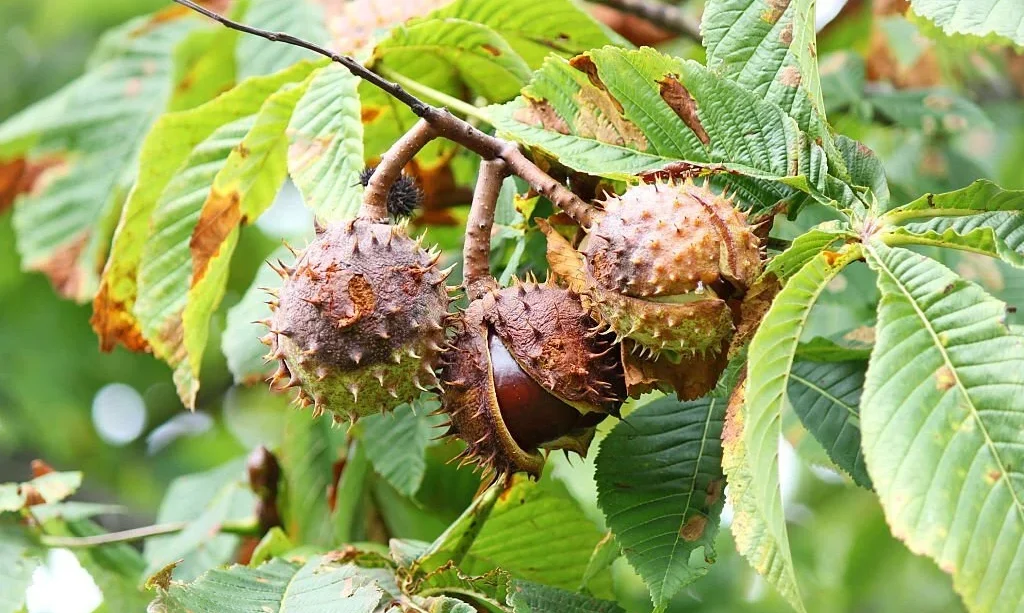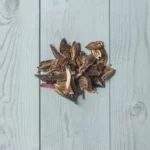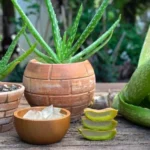Imagine having your very own chestnut tree, with its beautiful foliage and bountiful harvest of delicious nuts. Growing a chestnut tree from seed is an exciting and rewarding journey that allows you to witness the magic of nature firsthand. In this simple guide, we’ll take you through the steps of growing a chestnut tree from seed, from gathering the chestnuts to preparing them for planting. Get ready to embark on a fulfilling adventure of nurturing your own chestnut tree!
Gathering Chestnuts and Preparing for Planting
To begin your chestnut-growing journey, you’ll need to gather chestnuts and prepare them for planting. Here’s what you need to know:
- Chestnut Collection: Look for mature chestnuts during the fall season. Choose chestnuts that are free from blemishes, firm, and heavy. These signs indicate that the chestnuts are ripe and viable for planting.
- Preparing for Planting: Before planting, it’s essential to clean the chestnuts. Remove any remaining husks or debris by gently rinsing them under water. After cleaning, allow the chestnuts to air dry for a few days. This process ensures that the seeds are ready for germination.
Stratification: Preparing the Seeds for Germination
To break the seed dormancy and encourage germination, the chestnut seeds need to go through a process called stratification. Here’s how you can prepare the seeds for germination:
- Moist Stratification: Place the cleaned and dried chestnuts in a container with damp peat moss, vermiculite, or sand. Make sure the medium is slightly moist but not waterlogged. Seal the container and store it in a cool location, such as a refrigerator or cellar, for several months. This simulates the winter conditions required to prompt the seeds to germinate.
- Checking for Germination: Periodically check the chestnuts for signs of germination. Once you notice tiny sprouts emerging from the chestnuts, it’s time to move on to the next step.
By stratifying the chestnut seeds, you’re providing the ideal conditions for them to break dormancy and prepare for germination. In the following sections, we’ll explore the steps for planting the chestnut seeds and caring for the emerging seedlings.
- STARTING A TROPICAL GARDEN- Comprised of real horticultural grade ingredients such as shredded coir husk, pine bark, perlite, sand, and garden lime; no pelletized fertilizer
- PERFECT FOR POTTED TREES- Great for promoting root growth and to improve leaf shine, quickly grow your own indoor money tree
- SUPER MOISTURE DRAINAGE- Protects roots by quickly draining away excess water but keeping dirt moist for nutrient retention, best mimics their natural outdoor environment
- PROFESSIONALLY MIXED IN THE USA- Each bag is blended on our small family farm with premium ingredients
- HEAVY DUTY RESEALABLE BAGS- Ready to use potting mix available in a small 2 quart bag or a large 4 quart bag, perfect for all gardening needs
Planting the Chestnut Seeds
Now that your chestnut seeds have gone through stratification and are ready for germination, it’s time to plant them. Follow these steps to plant the chestnut seeds:
- Timing: Plant the chestnut seeds in late winter or early spring, when the weather begins to warm and the threat of frost has passed.
- Choose a Location: Select a suitable planting location with well-draining soil and plenty of sunlight. Chestnut trees thrive in full sun, so choose a spot where they can receive at least 6-8 hours of direct sunlight each day.
- Prepare the Soil: Loosen the soil in the planting area and remove any weeds or debris. Chestnut trees prefer slightly acidic soil, so if necessary, amend the soil with organic matter like compost or peat moss to improve its texture and fertility.
- Planting Depth: Dig a hole that is slightly larger than the chestnut seed. Place the seed in the hole with the pointed end facing upwards, and cover it with soil. The general rule of thumb is to plant the chestnut seed at a depth that is roughly two times its diameter.
- Spacing: If you plan to grow multiple chestnut trees, ensure adequate spacing between them. Allow at least 30-40 feet (9-12 meters) between each tree to provide ample room for growth and development.
By following these steps, you’ll give your chestnut seeds the best chance of sprouting and growing into healthy seedlings.
Care and Maintenance of Chestnut Seedlings
Caring for your chestnut seedlings is crucial for their healthy growth and development. Here are some important care practices to keep in mind:
- Watering: Keep the soil consistently moist, but avoid overwatering. Water the seedlings regularly, especially during dry periods. Aim to provide about 1 inch (2.5 cm) of water per week. Monitor the soil moisture level and adjust watering accordingly.
- Protection from Weather and Pests: Shield the seedlings from harsh weather conditions, such as strong winds and extreme temperatures. Consider using protective covers or temporary shelters when needed. Additionally, protect the seedlings from pests like rodents and deer by installing fencing or using deterrents.
- Sunlight and Nutrition: Ensure that your chestnut seedlings receive ample sunlight. Avoid shading them with other plants or structures. Apply organic fertilizer or compost around the base of the seedlings to provide them with essential nutrients for healthy growth.
- Weed Control: Regularly remove weeds and grass from around the base of the seedlings. Weeds compete for nutrients and moisture, which can hinder the growth of your chestnut trees.
By providing proper care and maintenance, you’ll nurture your chestnut seedlings into strong and robust trees. In the next sections, we’ll discuss the transplanting process and the long-term care required for your chestnut trees as they mature and bear fruits.
- Pro’s choice for growing Tomatoes, Buds, Fruits, Vegetables, Flowers and more! 3lb size makes about 300 Gallons of solution
- 1-Part Complete Premium NPK Formula with Organics combines at least 7 products and supplements into one!
- Maximum Plant Growth Weight and Harvest Quality Potential with minimum effort!
- Multiple Forms Calcium and Magnesium, Sulfur, Trace Elements and Amino Acid chelates for Max absorption uptake.
- Soluble Silica (Potassium Silicate source), Ascophyllum Nodosum Seaweed Kelp Extract, Fulvic Acid, Enzymes, 18 L-Amino Acids, B-Vitamins and Oligosaccharides
Transplanting the Chestnut Seedlings
As your chestnut seedlings grow, they will eventually outgrow their containers or their initial planting location. Here’s what you need to know about transplanting them:
- Timing: Transplant the seedlings when they have developed a strong root system and are at least 12-18 inches (30-45 cm) tall. This usually occurs in their second or third year of growth.
- Choosing a New Location: Select a permanent planting site for your chestnut trees. Consider the tree’s mature size and ensure that the location provides adequate space for the tree to reach its full potential.
- Digging the Hole: Dig a hole that is wider and slightly deeper than the seedling’s root ball. Gently remove the seedling from its container, being careful not to damage the roots. Place the seedling in the hole, backfill with soil, and lightly tamp it down.
- Watering and Mulching: Water the transplanted seedling thoroughly to help settle the soil and promote root establishment. Apply a layer of organic mulch around the base of the tree, but keep it a few inches away from the trunk to prevent moisture buildup and potential rotting.
By transplanting your chestnut seedlings correctly, you’re giving them a new home to continue their growth and development.
Long-Term Care and Growth of Chestnut Trees
Caring for your chestnut trees throughout their lifespan is essential. Here are some important considerations for their long-term care:
- Pruning: Regularly prune your chestnut trees to promote proper structure, remove dead or diseased branches, and maintain overall health. Pruning also helps manage the tree’s size and shape.
- Mulching and Weed Control: Maintain a layer of mulch around the base of your chestnut trees to conserve moisture, suppress weeds, and regulate soil temperature. Regularly remove any weeds or grass that compete with the tree for nutrients and water.
- Pest and Disease Management: Monitor your chestnut trees for signs of pests or diseases. If necessary, take appropriate measures to control infestations or seek professional advice for treatment options.
- Patience and Maturity: Chestnut trees take several years, typically 3-7 years, to reach maturity and start producing nuts. Be patient and continue to provide proper care, knowing that your patience will be rewarded with a bountiful harvest.
Conclusion
Growing a chestnut tree from seed is a fulfilling journey that requires patience, care, and dedication. From gathering and preparing the chestnuts to transplanting the seedlings and caring for the mature trees, each step is a testament to your love for nature and desire to witness the growth and beauty of these magnificent trees.
With proper care and attention, your chestnut trees will flourish, providing shade, aesthetic appeal, and a harvest of delicious nuts. So, embrace the adventure, and enjoy the process of nurturing your chestnut trees. Before you know it, you’ll be rewarded with the sight of majestic trees and the joy of harvesting your very own chestnuts for generations to come.






